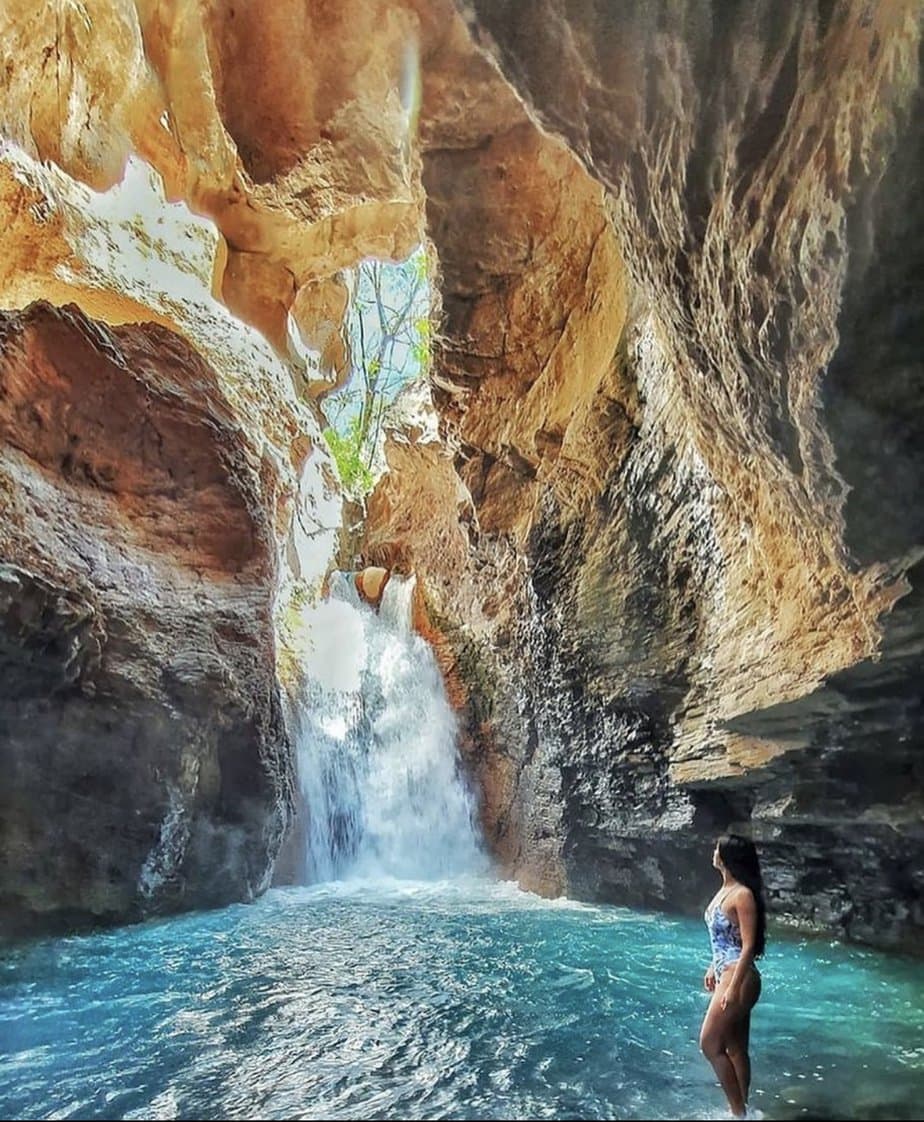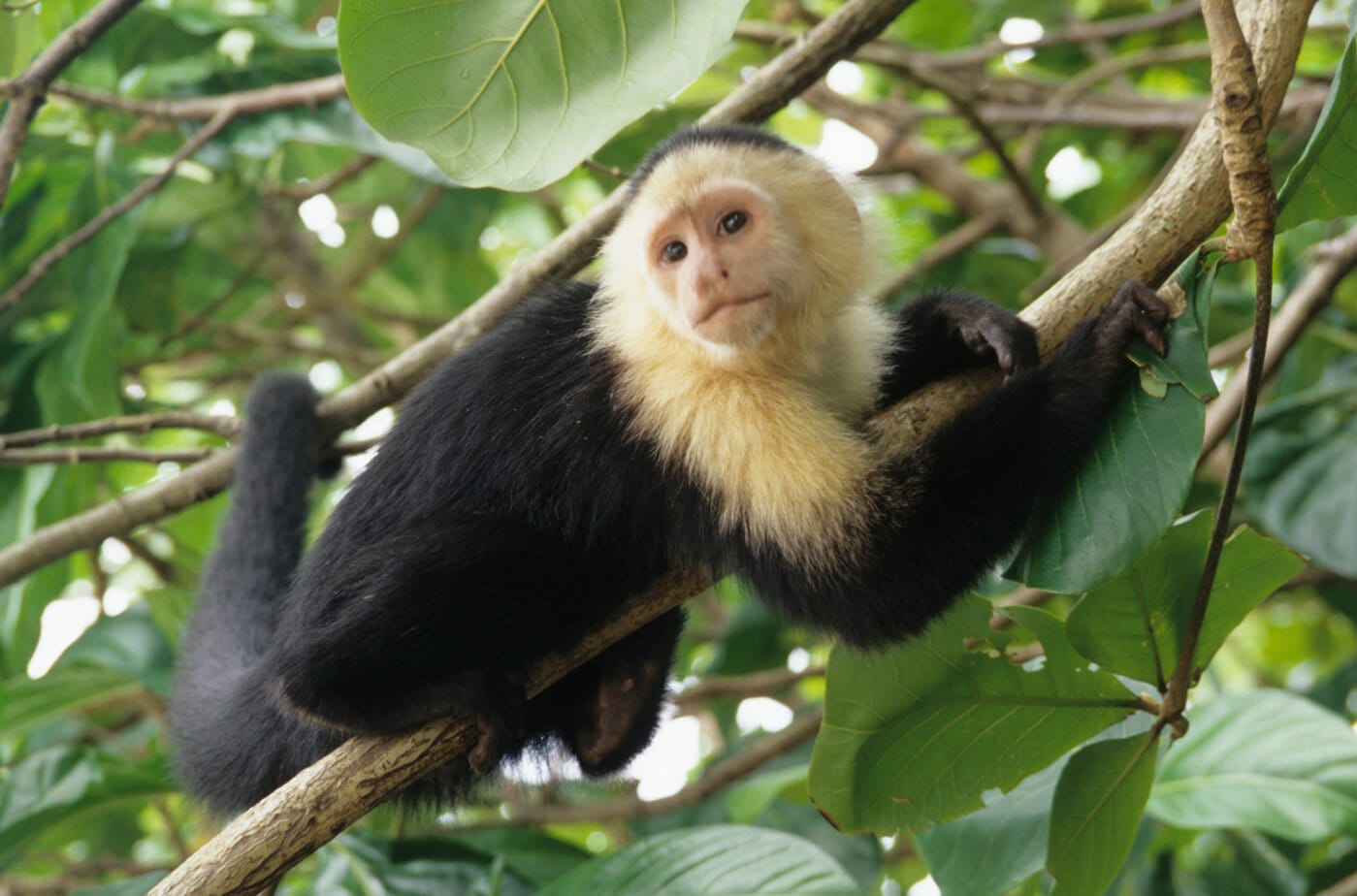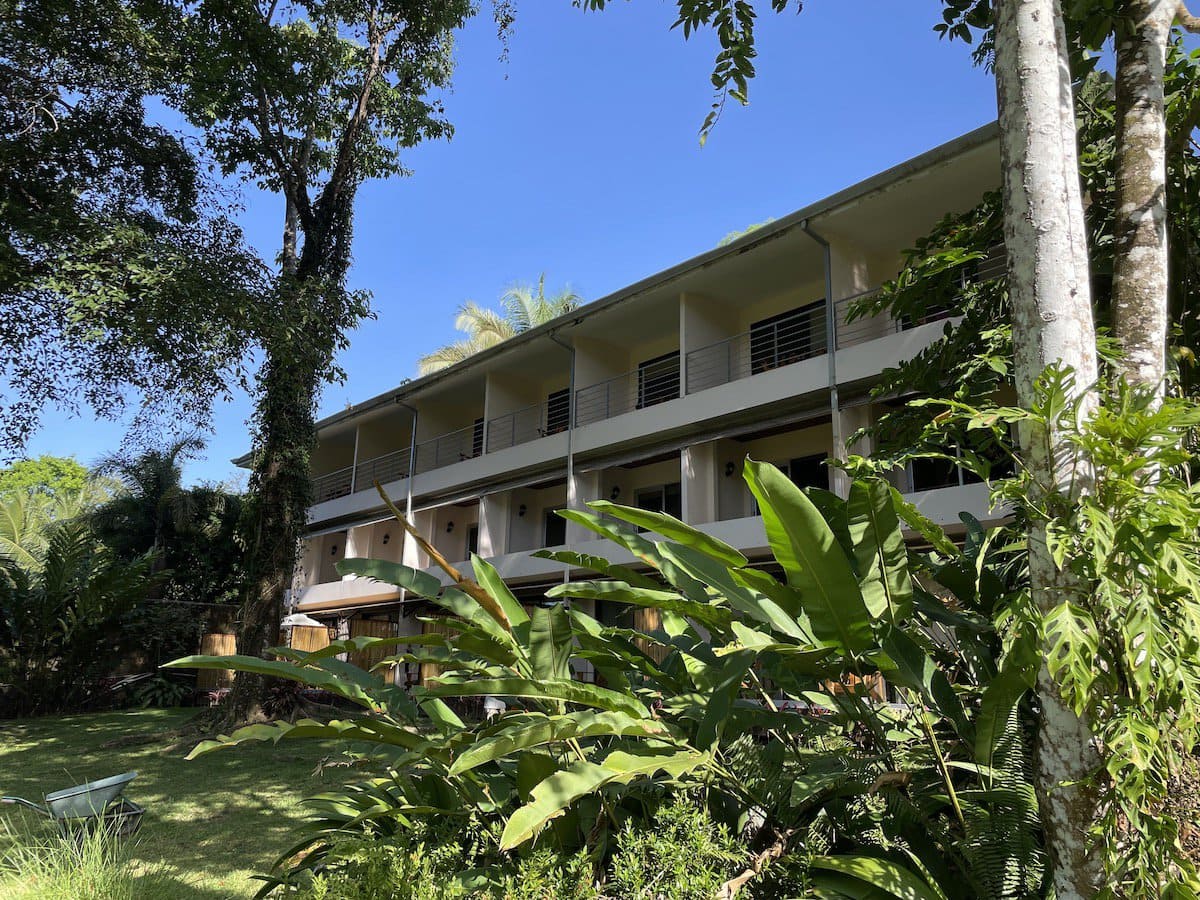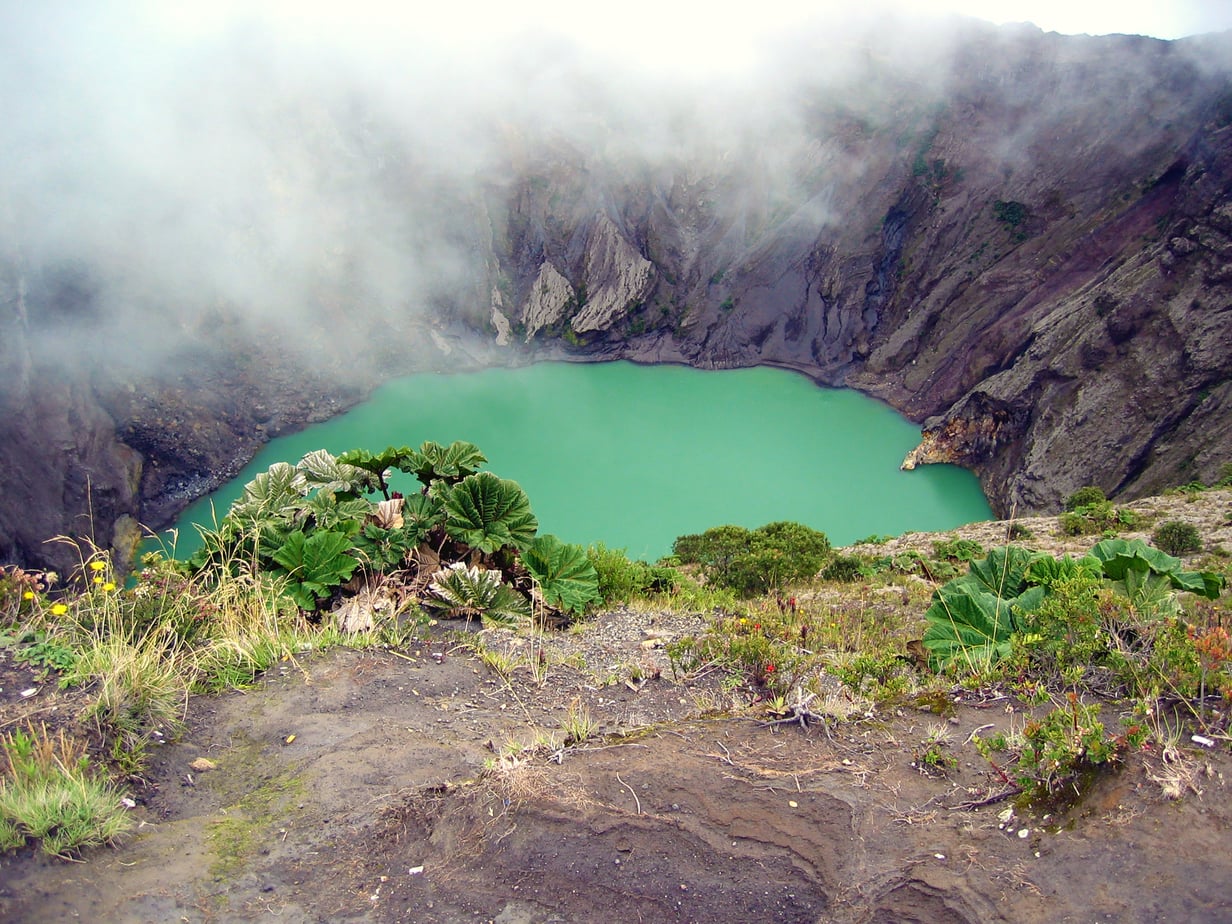Best Places To See Sloths in Costa Rica
This post may contain affiliate links.
It’s impossible to go to Costa Rica and not have quite a few animal sightings. Sloths are some of the most common species of wildlife in Costa Rica. Yet, there are still many people who visit the country and leave without seeing a single sloth! We don’t want that to happen to you!
So, in this post, I’m going to tell you where to see sloths including the kind of species to find, so your next visit can be worth your while. Read on!
RELATED POST: Costa Rica With Kids- The Complete Guide
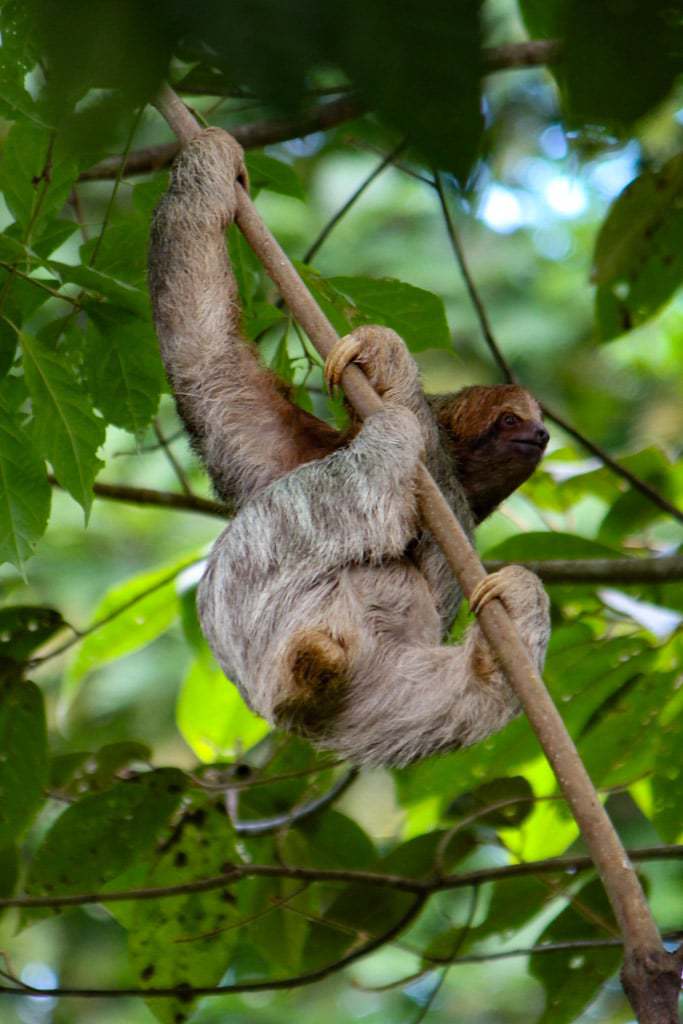
About Costa Rican Sloths
Known for their slow movements and characterful smiley faces, sloths are arboreal mammals residing in the tropical forests of South and Central America.
The cute baby-faced animals spend most of their lives hanging upside down in treetops, napping and hiding from predators, typically moving not more than 40 yards a day!
They have a very low metabolic rate which means it takes them a long time to digest their food. And kids always love this factoid- sloths head to the forest floor to poop!
Spotting sloths is not always easy. You must know where to look. Your best bet would be to look up into the sky-scraping treetops.
If you’re lucky, you may catch them descending to the ground where they come to poop once a week! Sometimes you may spot them resting in a calm river too – they are actually great swimmers!
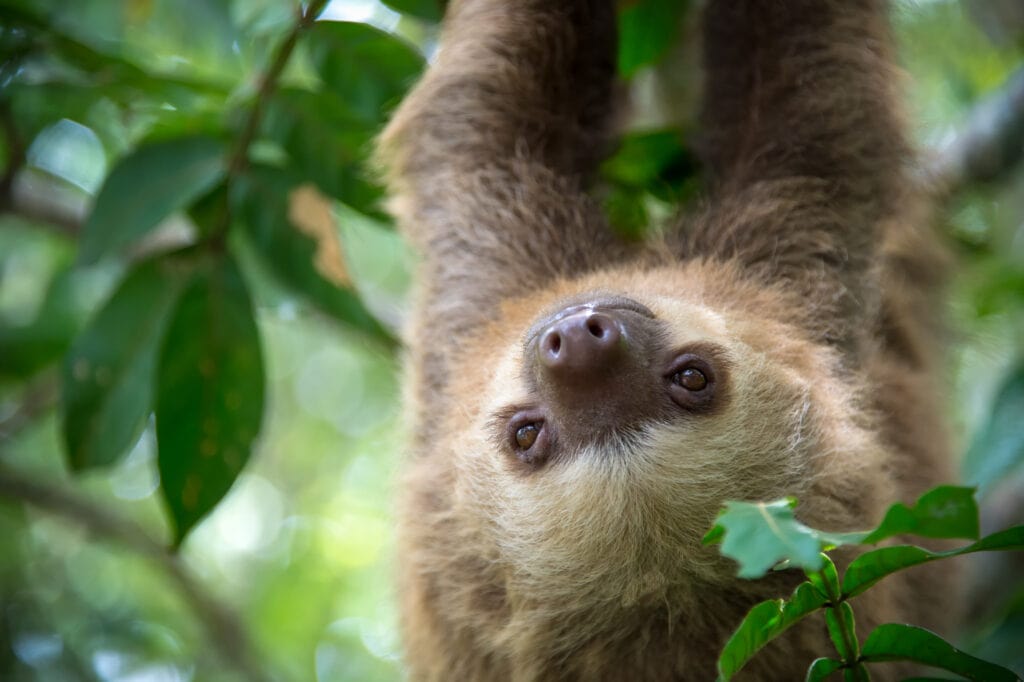
Types of Sloths Seen in Costa Rica
There are two species of sloths found in Costa Rica – the brown-throated three-toed sloth and the Hoffmann’s two-toed sloth – each with distinct characteristics that make it unique.
Brown-throated Three-toed Sloth
With three toes on each foot, a striking brown neck, and dark marks around its eyes, the brown-throated sloth is the most popular Costa Rican sloth in the world. It is smaller than the Hoffmann’s and because it is diurnal (active both day and at night), it’s also the species you’re most likely to spot during the day.
Hoffmann’s Two-toed Sloth
Although referred to as two-toed, only the front feet have two toes; the rear feet have three. Also, unlike their brown-throated sisters, Hoffmann’s sloths are nocturnal animals, mostly coming out at night. If you do see them during the day, they’ll likely be sleeping.
Their diet is also slightly different from that of the three-toed sloth species – while brown-throated sloths are strictly herbivorous, the Hoffmann’s have been found to occasionally eat small vertebrates too.
To see these two types of sloths, below are some places you can go:
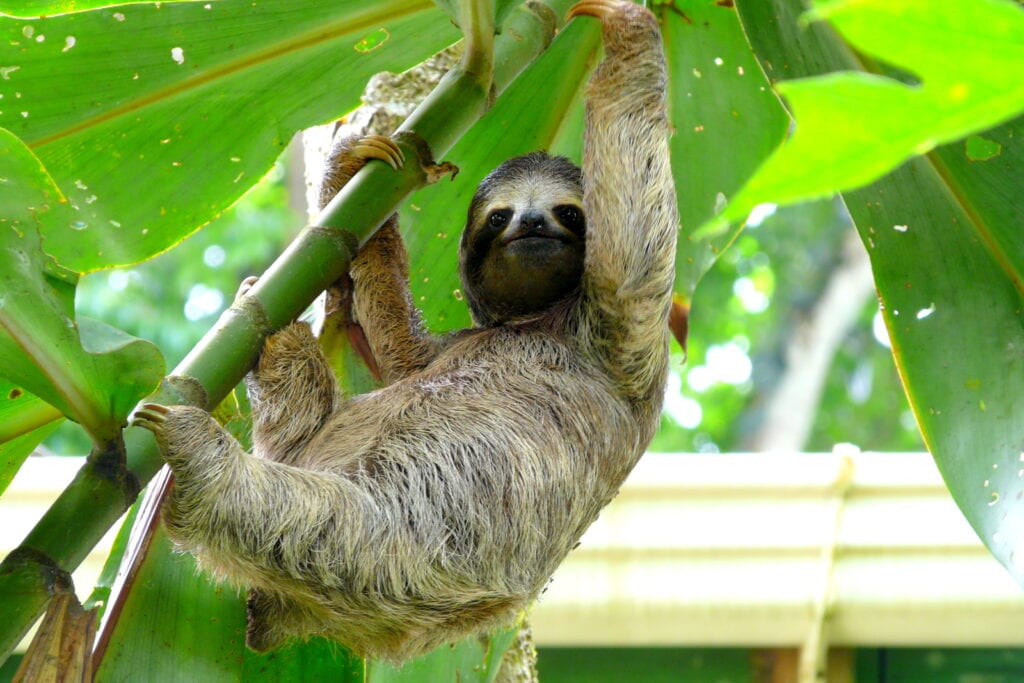
Sloth Sanctuaries
If you’re visiting with toddlers or young children who may not have the patience to traverse the jungle looking for sloths, I would recommend going to a sloth sanctuary instead. Here, kids can interact with sloths, see them up close, and ooh and ahh to their heart’s content.
There are plenty of wildlife rescue centers in Costa Rica that protect and care for sloths, which would make your trip just as rewarding.
Some wildlife refuge centers such as Zoo Ave and Centro El Rescate Las Pumas care for animals in general but also have sloths on site. These can be fun because kids can see lots of different species at the same place.
Here are my two favorite sloth sanctuaries:
Sloth Sanctuary of Costa Rica: Near Cahuita and Puerto Viejo, Limón you’ll discover the first-ever rescue facility for injured and abandoned sloths in Costa Rica where you will hear special stories about their rescue and learn about wildlife conservation. This is the best sanctuary on the Caribbean side.
Selvatura Park’s Sloth Sanctuary: If you’re staying in Santa Elena, take a trip to Selvatura Park and enjoy a guided tour of these adorable animals in an environment that’s carefully designed to mimic their natural habitat. Here you will see both baby sloths and adults and it’s only 10 minutes away from downtown Santa Elena.
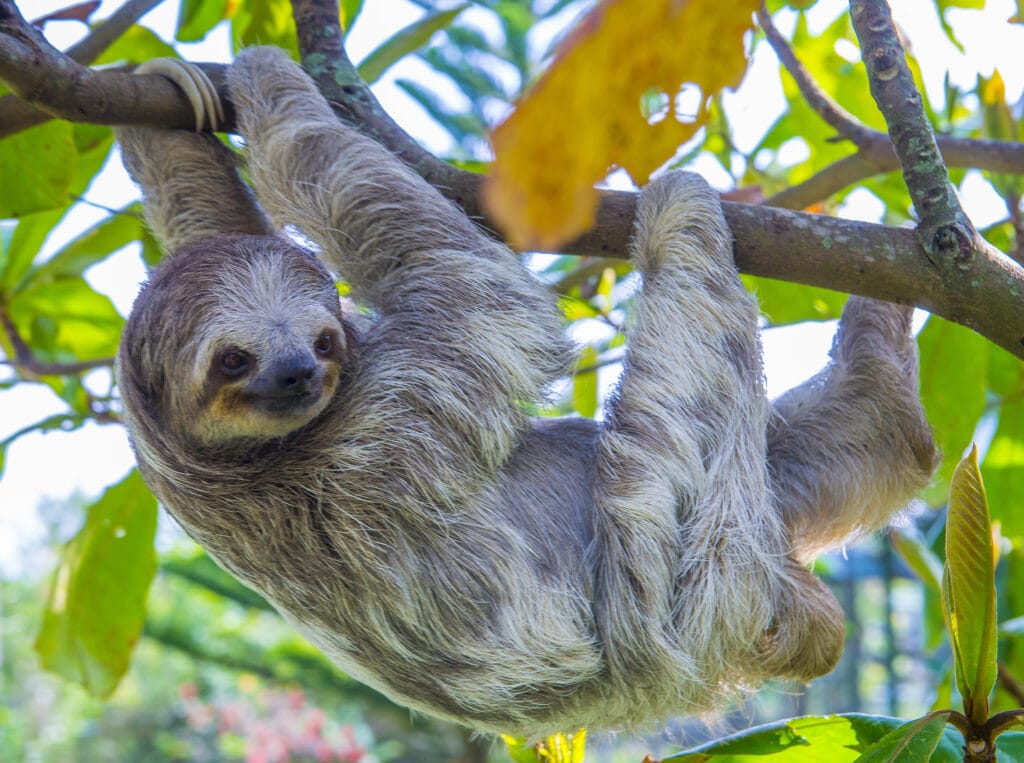
Manuel Antonio National Park
Located along the Pacific coastline, Manuel Antonio National Park is one of the most frequently visited places for people looking to see sloths and other unique wildlife in their natural habitat.
Here where forest and beach vegetation blend harmoniously, hundreds of mammals call home, including the two- and three-toed sloths.
The park even has a special trail exclusively for watching sloths! Plus there are plenty of skilled guides who are well acquainted with the trail and constantly communicate with each other about where to find the sloths.
The park is 3 hours from San Jose International Airport by road but you could also take a 20-minute flight to Quepos from where you can rent a car to the park. Come prepared to find lots of crowds especially if you’re visiting during the peak season.
Related post: Costa Rica’s National Parks Guide
Arenal Volcano National Park
The tropical rainforests of the La Fortuna area entice both Costa Ricans and foreigners with lush tropical forests and magnificent views of the monumental Arenal Volcano. And for wildlife lovers, this is also a great place to see cute sleepers.
If you’re coming here for sloths, the best place to go would be the Bogarin Trail. The 1.2-mile (2 km) trail hides in a restored secondary forest right in town and is home to about 25 sloths and a variety of other animals.
While sometimes the sloths will be hanging out in the middle tree branches, for the most part, these creatures will be tucked inside thick leaves up high in the trees, so I would recommend taking a guided tour to be able to find them.
Plus the guide’s telescope also comes in handy when you want to take pictures of the sloths! If you plan to stay, check out Nayara Hotel; the snoozy cuties are frequent here too.
While there is a sloth sanctuary in the La Fortuna area, beware! One of my favorite local guides let me know that around the time the sloth sanctuary was opened the local sloth population diminished to almost zero. Everyone in the area finds it suspect, and most guides won’t take you to the sloth sanctuary in La Fortuna.
Monteverde National Park
The cloud forests of Monteverde are complete eye candy, but that’s not the only reason this place is a popular tourist hub. Monteverde is also a great place to watch the sloths. The only downside is that you won’t be able to see the two types of sloths here, as only the Hoffmann species inhabits the area.
Also, keep in mind that Hoffmann’s are nocturnal, so you’ll likely not have successful viewing during the day. Good thing? You can make arrangements for a guided nighttime tour when the adorable tree-dwellers are more active.
Caribbean Coast
When it comes to looking for sloths in Costa Rica, you’re more likely to get a better experience on the Caribbean Coast than on the Pacific Coast where the climate is a little too dry for these animals.
Well, unless you’re traveling to the Osa Peninsula, the remote southern end of the Pacific where rainforests are quite expansive and the sloth’s natural habitat is still pretty intact, your best bet would be the Caribbean.
In the Caribbean, you’ll see spontaneous sloths even on the side of the road! But if you’re really emotionally involved in learning about sloths and their habitat, there are plenty of national parks in the region including the Cahuita, La Amistad, and Tortuguero. Just make sure to get a guide for the tour.
Related post: 5 Favorite Costa Rica Rainforests
Corcovado National Park
Corcovado National Park, on the Osa Peninsula, is one of the best places to see wild animals in all of Costa Rica. You’ll see howler monkeys, tapirs, coatis, whales, and quetzals. That means you can see sloths here too!
The very best way to do so is by hiring an experienced guide. Note that you’ll have to walk pretty far into the forest to have the best chance of seeing a sloth in the wild, so this isn’t the best place to go with young children.

Christa Jimenez
Welcome! I’m Christa, a Spanish teacher married to a handsome Costa Rican and mother of two bilingual daughters. We’ve spent over 25 years living in and traveling to Costa Rica with our daughters, and this website is my love letter to all things Costa Rica- and to bilingual parenting too. You can read my full story here. Thanks for stopping by!



